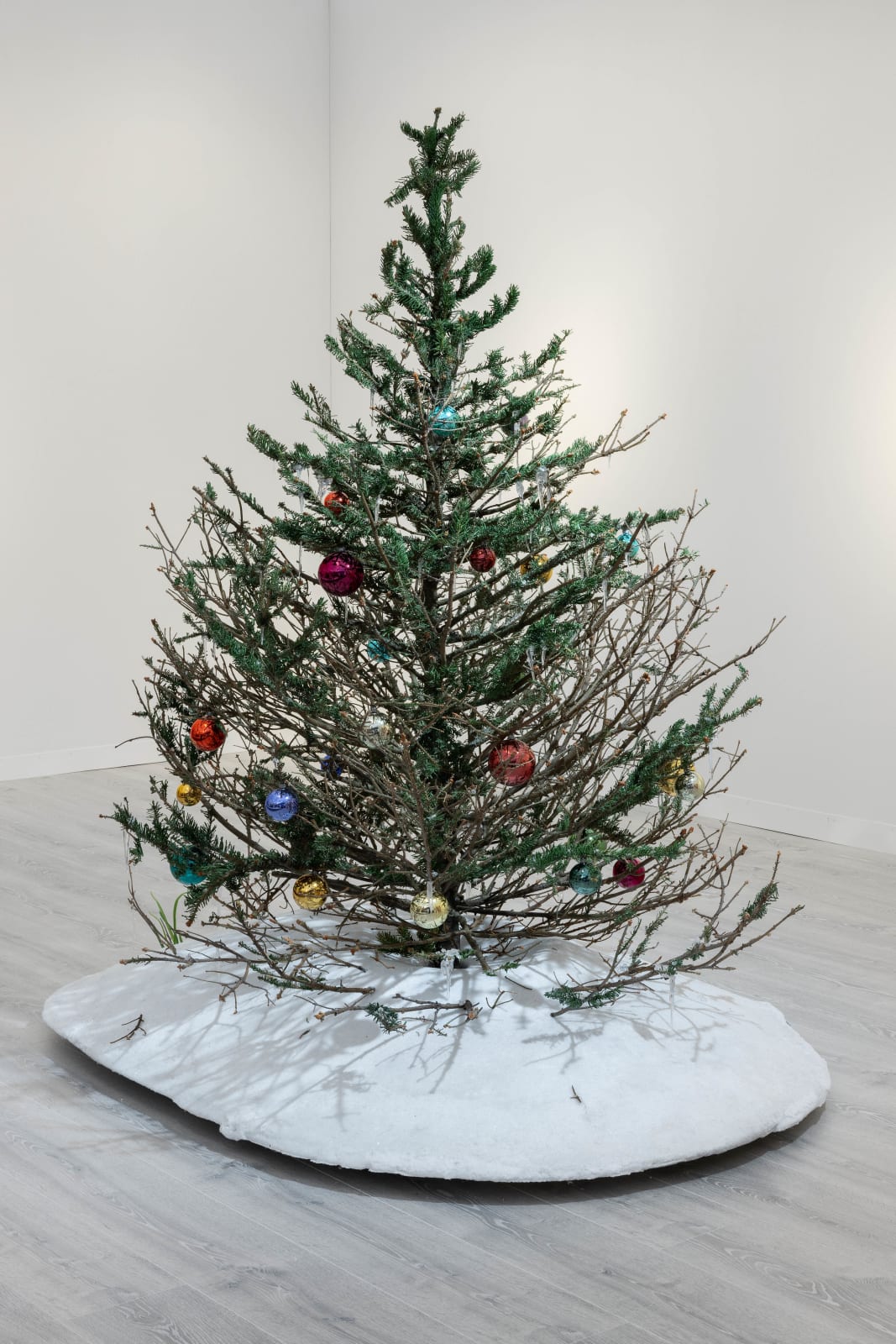










Philippe Parreno
Silent Transformation (Anathema), 2022
Polychromic sculpture: painted stainless steel and glass
223 x 150 x 188 cm
87 3/4 x 59 x 74 in
87 3/4 x 59 x 74 in
Copyright The Artist
Further images
-
(View a larger image of thumbnail 1
)

-
(View a larger image of thumbnail 2
)

-
(View a larger image of thumbnail 3
)

-
(View a larger image of thumbnail 4
)

-
(View a larger image of thumbnail 5
)

-
(View a larger image of thumbnail 6
)

-
(View a larger image of thumbnail 7
)

-
(View a larger image of thumbnail 8
)

-
(View a larger image of thumbnail 9
)

-
(View a larger image of thumbnail 10
)

-
(View a larger image of thumbnail 11
)

Cast in hyperreal detail, Silent Transformation (Anathema), 2022 is a painted stainless steel and glass sculpture representing an abandoned fir tree. Glistening icicles rendered from glass drip from its branches....
Cast in hyperreal detail, Silent Transformation (Anathema), 2022 is a painted stainless steel and glass sculpture representing an abandoned fir tree. Glistening icicles rendered from glass drip from its branches. The gleaming snowdrift at the base of the work is made entirely from glass, with delicate green shoots peeping through.
Astonishing in its verisimilitude, the sculpture physically retains the elegance of an actual tree, providing the illusion that it is real, despite being entirely human-made. The viewer thus enters into an uncanny valley, wherein his or her expectations and understanding of nature are disrupted.
The title of the sculpture refers to a living object which is undergoing a slow transformation – the green grass shoots are growing upwards, the snow is gradually melting. This process is captured, the moment frozen in time. Plato and Aristotle spoke of mimesis as the creation of works of art with reference to the physical world as a model for beauty and truth. Aristotle further defined the term as the imitation and perfection of nature. In this way the subtitle of the sculpture relates to this act of the artist imitating nature and thus emulating God - an anathema, something terrible and forbidden. With the word 'anathema' in its title, the artwork directly references the human destruction of the natural environment.
Decorated with 26 colourful, glass baubles the sculpture also constitutes a corruption of a western ritualistic icon: a Christmas tree devoid of its traditional meaning, an object of celebration gone awry.
Astonishing in its verisimilitude, the sculpture physically retains the elegance of an actual tree, providing the illusion that it is real, despite being entirely human-made. The viewer thus enters into an uncanny valley, wherein his or her expectations and understanding of nature are disrupted.
The title of the sculpture refers to a living object which is undergoing a slow transformation – the green grass shoots are growing upwards, the snow is gradually melting. This process is captured, the moment frozen in time. Plato and Aristotle spoke of mimesis as the creation of works of art with reference to the physical world as a model for beauty and truth. Aristotle further defined the term as the imitation and perfection of nature. In this way the subtitle of the sculpture relates to this act of the artist imitating nature and thus emulating God - an anathema, something terrible and forbidden. With the word 'anathema' in its title, the artwork directly references the human destruction of the natural environment.
Decorated with 26 colourful, glass baubles the sculpture also constitutes a corruption of a western ritualistic icon: a Christmas tree devoid of its traditional meaning, an object of celebration gone awry.